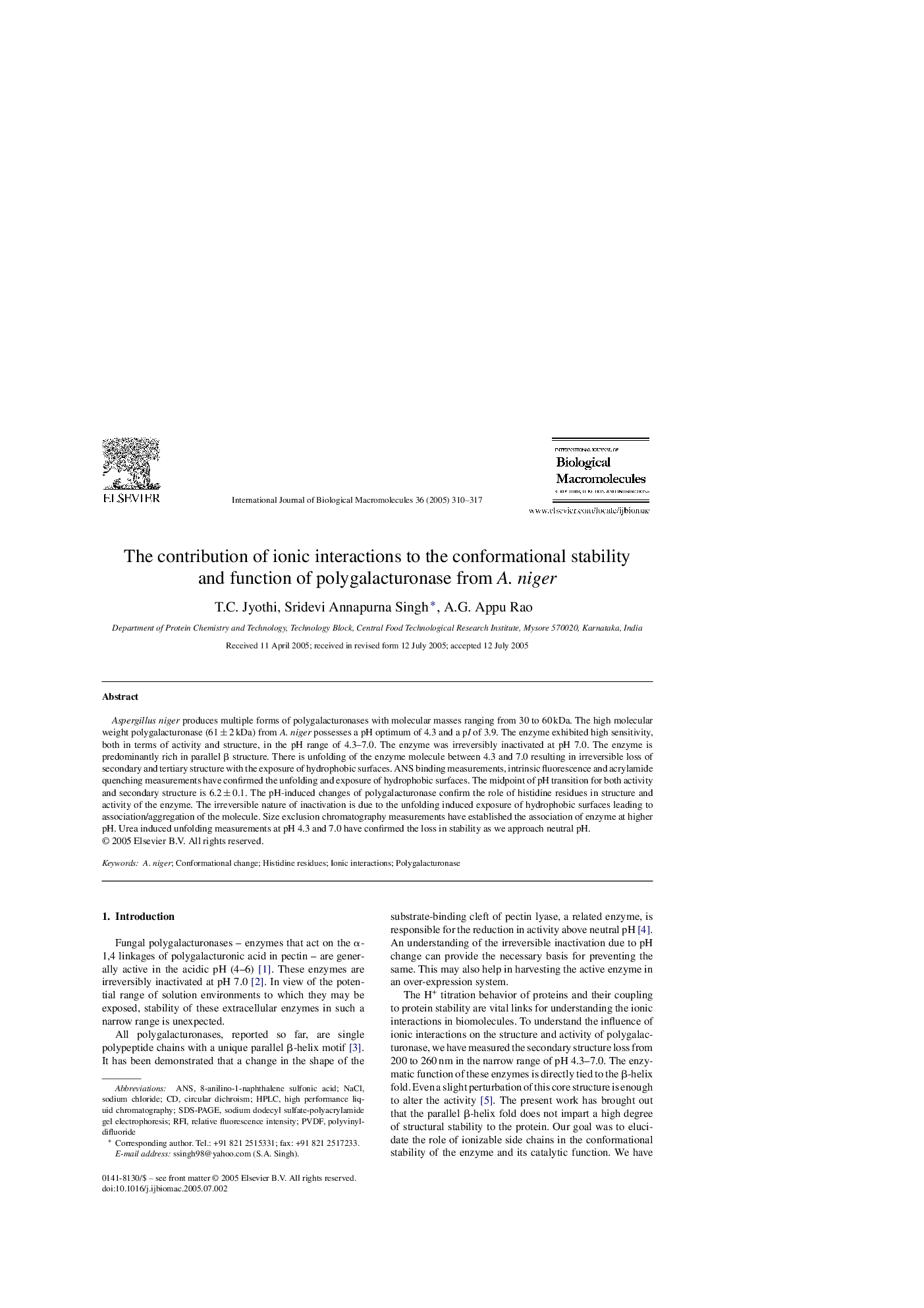| Article ID | Journal | Published Year | Pages | File Type |
|---|---|---|---|---|
| 9890867 | International Journal of Biological Macromolecules | 2005 | 8 Pages |
Abstract
Aspergillus niger produces multiple forms of polygalacturonases with molecular masses ranging from 30 to 60 kDa. The high molecular weight polygalacturonase (61 ± 2 kDa) from A. niger possesses a pH optimum of 4.3 and a pI of 3.9. The enzyme exhibited high sensitivity, both in terms of activity and structure, in the pH range of 4.3-7.0. The enzyme was irreversibly inactivated at pH 7.0. The enzyme is predominantly rich in parallel β structure. There is unfolding of the enzyme molecule between 4.3 and 7.0 resulting in irreversible loss of secondary and tertiary structure with the exposure of hydrophobic surfaces. ANS binding measurements, intrinsic fluorescence and acrylamide quenching measurements have confirmed the unfolding and exposure of hydrophobic surfaces. The midpoint of pH transition for both activity and secondary structure is 6.2 ± 0.1. The pH-induced changes of polygalacturonase confirm the role of histidine residues in structure and activity of the enzyme. The irreversible nature of inactivation is due to the unfolding induced exposure of hydrophobic surfaces leading to association/aggregation of the molecule. Size exclusion chromatography measurements have established the association of enzyme at higher pH. Urea induced unfolding measurements at pH 4.3 and 7.0 have confirmed the loss in stability as we approach neutral pH.
Keywords
8-anilino-1-naphthalene sulfonic acidPVDFNaClPolygalacturonaseA. nigerRFIsodium dodecyl sulfate-polyacrylamide gel electrophoresisSDS-PAGEIonic interactionsConformational changecircular dichroismANSSodium chloriderelative fluorescence intensityhistidine residuespolyvinyldifluoridehigh performance liquid chromatographyHPLC
Related Topics
Life Sciences
Biochemistry, Genetics and Molecular Biology
Biochemistry
Authors
T.C. Jyothi, Sridevi Annapurna Singh, A.G. Appu Rao,
